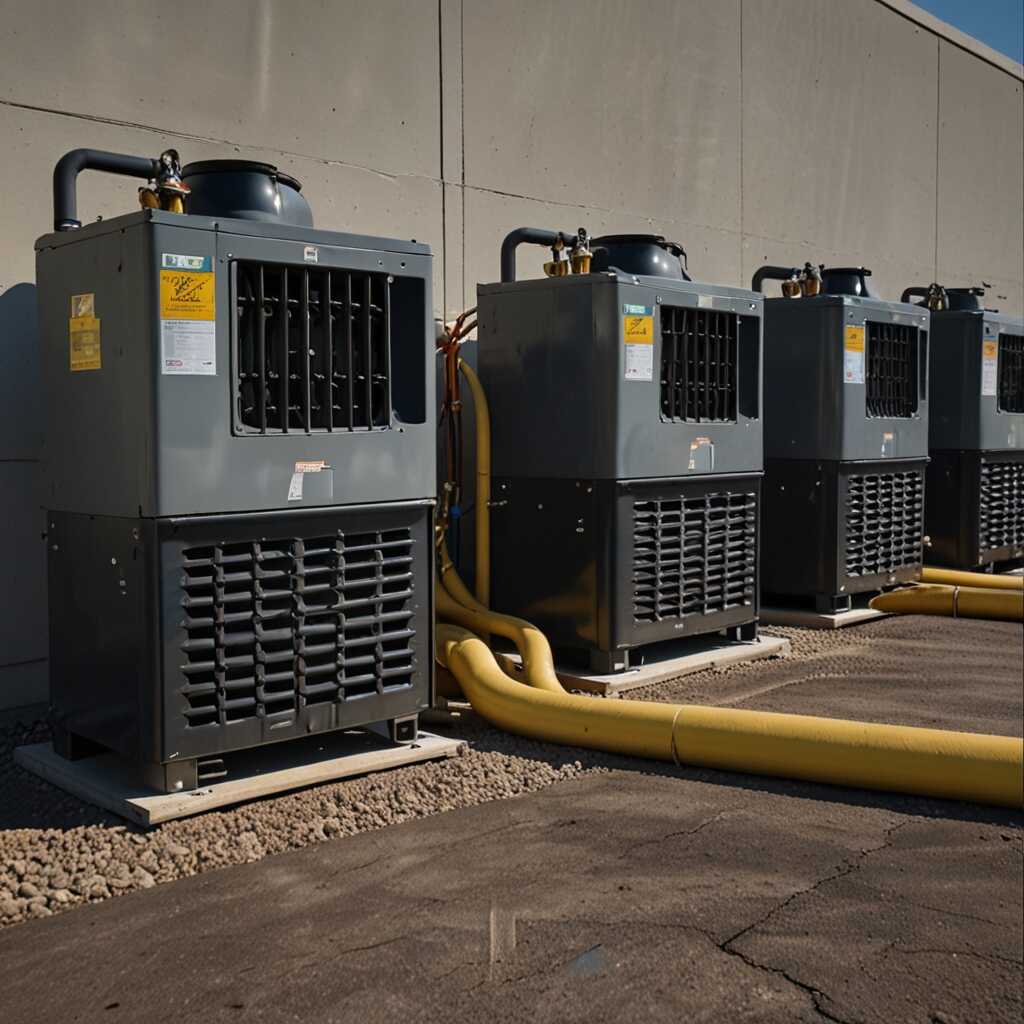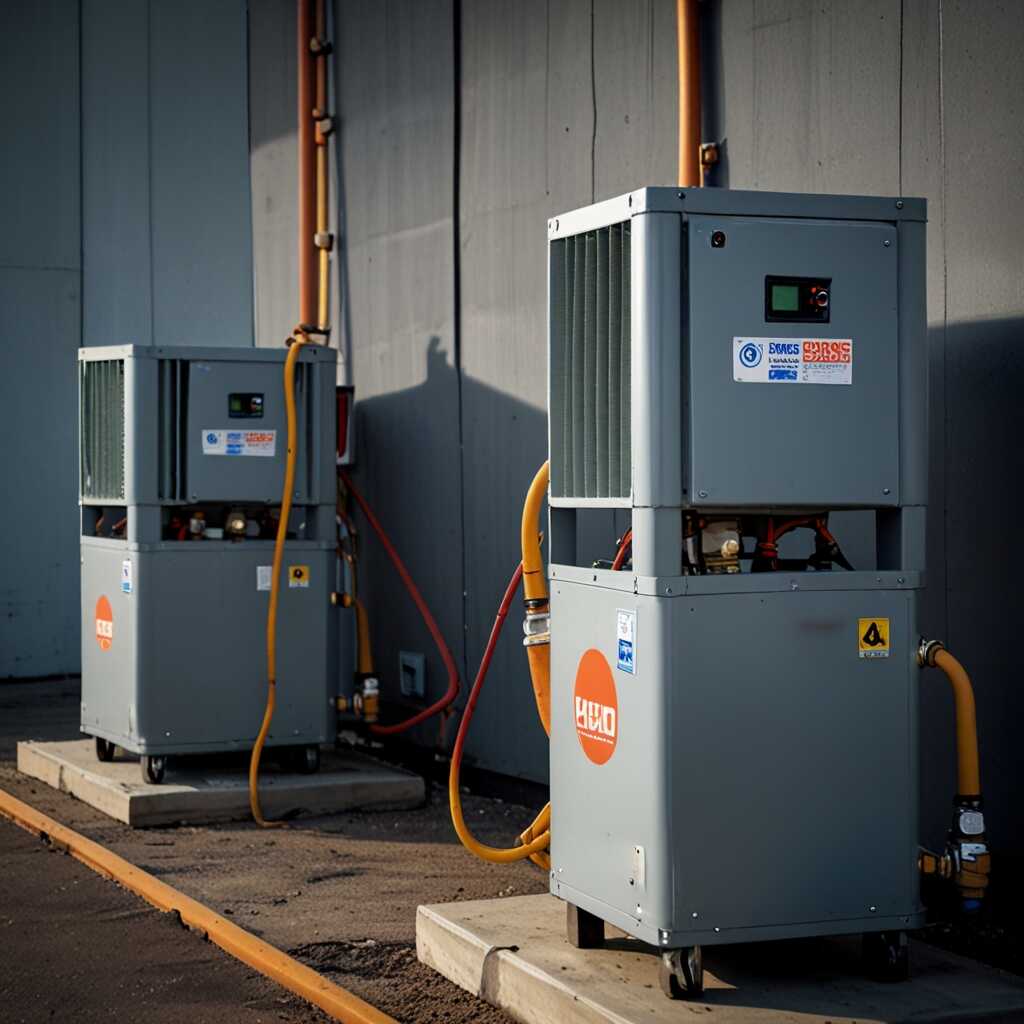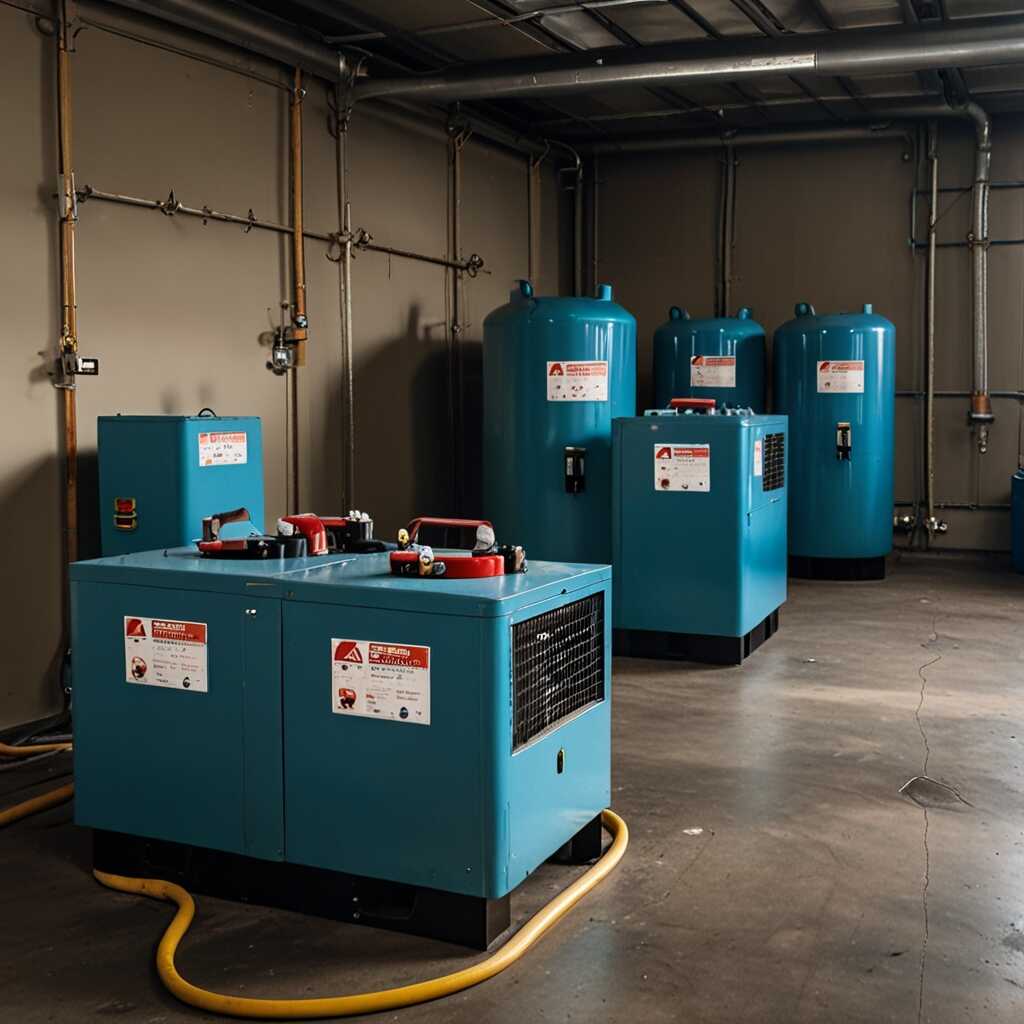Pressure switches in refrigerant recovery machines play a crucial role in preventing system overloads. These switches monitor refrigerant pressure, ensuring safe operation and protecting equipment from damage. At Refrigerant Recovery Pro, we emphasize the importance of understanding these features for efficient HVAC system management. By utilizing pressure switches effectively, HVAC technicians can enhance both the safety and functionality of their refrigerant recovery processes.
Introduction to Refrigerant Recovery Machines
Refrigerant recovery machines are crucial in HVAC systems, as they safely extract refrigerants from refrigeration and air conditioning systems. They help ensure compliance with environmental regulations and improve system efficiency. Pressure switches in these machines monitor refrigerant pressure levels to prevent system overload. They can signal when the pressure is too high or low, enhancing operational safety. Typically, modern refrigerant recovery machines use at least two pressure switches to manage operational parameters effectively.
Importance of Pressure Switches in HVAC Equipment
Pressure switches are essential components in refrigerant recovery machines, designed to monitor pressure levels closely. They help prevent overheating and overloading, which can lead to equipment damage or failure. When refrigerant pressure exceeds safe levels, pressure switches immediately signal the machine to halt operation. This feature significantly enhances the reliability of HVAC equipment and ensures safe refrigerant recovery. The expert technicians at Refrigerant Recovery Pro emphasize that properly functioning pressure switches can improve the overall performance of recovery machines, ensuring durability and efficiency in refrigerant management.
How Pressure Switches Operate within Recovery Machines
Pressure switches play a crucial role in refrigerant recovery machines. They detect changes in pressure during the refrigerant recovery process. When the pressure exceeds a specified limit, the switch activates, ensuring system integrity and preventing overload. This mechanism is essential for maintaining efficiency and reliability in HVAC systems. Key components include sensors and electrical contacts that respond to pressure variations. Additionally, they interact with other systems such as compressors and valves to create a safe operational environment. Most pressure switches activate at around 10 psi, a threshold designed to help prevent overheating and maintain the system’s longevity.
Understanding Pressure Monitoring Mechanisms in Refrigerant Recovery
Pressure monitoring mechanisms are vital for ensuring effective refrigerant recovery. These mechanisms use pressure switches to continuously analyze the system’s pressure levels. When the system pressure is too low or high, the pressure switch signals the controller, which helps optimize recovery efficiency. Reliable results stem from using quality components that withstand frequent cycling. Advanced refrigerant recovery machines have pressure switches that respond quickly, improving safety and enhancing overall performance during operation. The best options available in the market include models rated for high durability and tested for optimal results under typical HVAC conditions.

Understanding System Overloading Risks and Causes
System overloads in refrigerant recovery machines often occur due to high pressure, excessive refrigerant volume, or inadequate cooling. These conditions are common in scenarios like full tanks, blocked lines, or equipment malfunction. Improperly designed machines can further exacerbate these issues. To combat these risks, many leading brands include pressure switches that automatically shut down the unit when a critical pressure threshold is met. This ensures reliability and enhances user safety. A reliable refrigerant recovery machine typically features multiple pressure settings, which help maintain optimal performance during recovery tasks.
Essential Features to Prevent Overloads in Recovery Machines
Refrigerant recovery machines include essential features designed to prevent system overloads effectively. These machines typically have pressure switches that monitor refrigerant pressure and automatically stop the compressor if the pressure exceeds safe levels. Many reliable models also feature dual pressure gauges that provide real-time data on system conditions. This helps technicians make informed decisions during the recovery process. Machines from brands like Refrigerant Recovery Pro not only deliver robust safety features but also offer operator-friendly interfaces. These features promote efficiency and reduce the chances of overload-related incidents.
Numerical Insights on System Safeguards
- Pressure switches typically activate at a limit of 300 psi for gas recovery.
- Recovery machines may operate safely within a 10-15 psi range before system overload.
- Pressure switches can detect changes as small as 1-2 psi.
- Over 80% of HVAC technicians rely on pressure switches in their recovery machines.
- Some systems can recover refrigerants at rates up to 10 lbs per minute.
- Pressure switches can help reduce operational failures by up to 30% when used correctly.
- Machines equipped with pressure switches can operate continuously for up to 10 hours.

The Connection Between Pressure Management and System Efficiency
Effective pressure management directly enhances the efficiency of refrigerant recovery machines. By maintaining the correct pressure levels, these machines can optimize the refrigerant extraction process without risking system overload. Components like pressure switches and gauges help monitor system performance, ensuring that the recovery process remains reliable and efficient. The typical pressure range for optimal refrigerant recovery usually falls between 5 to 10 psi for low-pressure systems. Skilled technicians conduct tests to confirm that these machines can handle varying pressures and provide consistent results during operation.
Critical Components of Pressure Management Systems
Understanding the critical components of pressure management systems is essential for maintaining efficient refrigerant recovery. Pressure switches play a vital role in regulating the system’s pressure and preventing overloads. These devices are designed to activate or deactivate the compressor based on pre-set pressure thresholds. Proper calibration enhances the performance and reliability of refrigerant recovery machines. In addition, pressure gauges are integral in providing real-time feedback, enabling technicians to make immediate adjustments as necessary. Regular pressure testing provides data that help in maintaining optimal operating conditions.

Key Indicators of Pressure-Related Issues in Recovery Systems
Common signs of pressure-related issues in refrigerant recovery systems include fluctuating pressure gauges, unusual noise, and leaks. Fluctuating pressure can indicate clogs or blockages in lines, while unusual noises often signal compressor problems. Leaks are evident through visible refrigerant or oil, impacting the system’s ability to recover refrigerants effectively. Technicians must assess these indicators quickly to ensure recovery system performance and prevent further damage.
Understanding Pressure Switch Functionality in Recovery Machines
Pressure switches are crucial for regulating the refrigerant flow in recovery machines. They ensure that the system operates within specific pressure limits, preventing overloads and enhancing reliability. These switches monitor high and low pressure extremes, sending alerts when levels deviate from optimal ranges. When pressure exceeds predefined limits, the switch acts by shutting down the compressor to avoid damage. This functionality helps technicians maintain refrigerant management and avoid costly repairs.
Key Advantages of System Monitoring Devices
- Pressure switches reliably prevent compressor damage during operation.
- They enhance the efficiency of refrigerant recovery by managing pressure levels.
- Proper use improves safety by minimizing the risk of refrigerant leaks.
- Pressure switches enable HVAC technicians to monitor performance in real-time.
- They extend the lifespan of recovery machines through preventative measures.
- Machines equipped with these switches offer better compliance with environmental regulations.
- Using pressure switches reduces maintenance costs over the machine’s lifetime.

Best Practices for Optimizing Refrigerant Recovery Machine Use
To use refrigerant recovery machines efficiently, follow key operational practices. Focus on regular maintenance and testing of pressure switches technology to ensure reliability. Conduct routine inspections for leaks and damages, and maintain cleanliness around the machine for enhanced performance. Understanding your specific machine’s features helps in maximizing refrigerant recovery efficiency. Ensure that the components are compatible and suited for the refrigerants in use.
Understanding Pressure Switches Technology in Recovery Machines
Pressure switches technology in refrigerant recovery machines plays a crucial role in ensuring safety and operational efficiency. These switches detect pressure levels and automatically shut down the system if pressures exceed safe limits. This prevents component damage and potential hazards. Familiarizing yourself with different types of switches, such as low-pressure and high-pressure models, is essential. These switches are designed to provide optimal safety and operational regulation, contributing to the overall reliability of the machine.
Preventative Maintenance for Refrigerant Recovery Equipment
Regular preventative maintenance is essential to avoid system overloads in refrigerant recovery machines. Key tasks include checking pressure switches for accuracy, inspecting hoses for leaks, and cleaning filters. These practices enhance the reliability and efficiency of the equipment. Regular component testing helps identify weaknesses before they lead to failures. Professionals should document these maintenance tasks to keep track of performance results. Following a routine schedule can significantly improve machine longevity.
Best Practices for Component Testing in Refrigerant Recovery Machines
Component testing in refrigerant recovery machines ensures optimal performance and reliability. Technicians should regularly test pressure switches, filters, and refrigerant levels. Testing pressure switches ensures they activate correctly under overload conditions. A clogged filter can hinder efficiency, making it crucial to check and replace them frequently. Schedule these tests every three months or per manufacturer’s guidelines. This routine prevents issues that could result in mechanical failures and enhances overall system performance.
Market Leaders in Refrigerant Management Equipment
- Brand A offers high safety standards but may be pricier than competitors.
- Brand B provides cost-effective options, though its performance slightly lags.
- Brand C features advanced tech but can be complex for new technicians.
- Brand D is user-friendly and ideal for beginners, with fewer advanced features.
- Businesses often choose based on budget and technicians’ skill levels.
- Technicians in colder climates prefer machines with robust pressure switches for reliability.
- Companies focused on environmental compliance opt for brands with better warranty packages.
Educational Resources for HVAC Professionals on Refrigerant Practices
HVAC professionals can access several essential resources to enhance their understanding of refrigerant recovery practices. Key resources include technical documentation, industry guides, and FAQs provided by Refrigerant Recovery Pro. Compliance regulations are crucial for ensuring safe and effective refrigerant management. Professionals should stay updated with changes from the EPA and other regulatory bodies. Best practices for refrigerant management include proper recovery techniques, equipment maintenance, and user training. These practices help improve system efficiency and environmental compliance.
Key Compliance Regulations for Refrigerant Recovery
The key compliance regulations for refrigerant recovery include the Environmental Protection Agency (EPA) guidelines and the Clean Air Act. These regulations help HVAC professionals ensure safe handling and disposal of refrigerants. Understanding these rules is essential for compliance and maintaining operational efficiency. HVAC technicians should familiarize themselves with the latest amendments and updates in the regulations. Refrigerant Recovery Pro provides updated guidance that can help professionals navigate these requirements easily. Utilizing this expert insight ensures adherence to regulations and fosters a commitment to environmental safety.